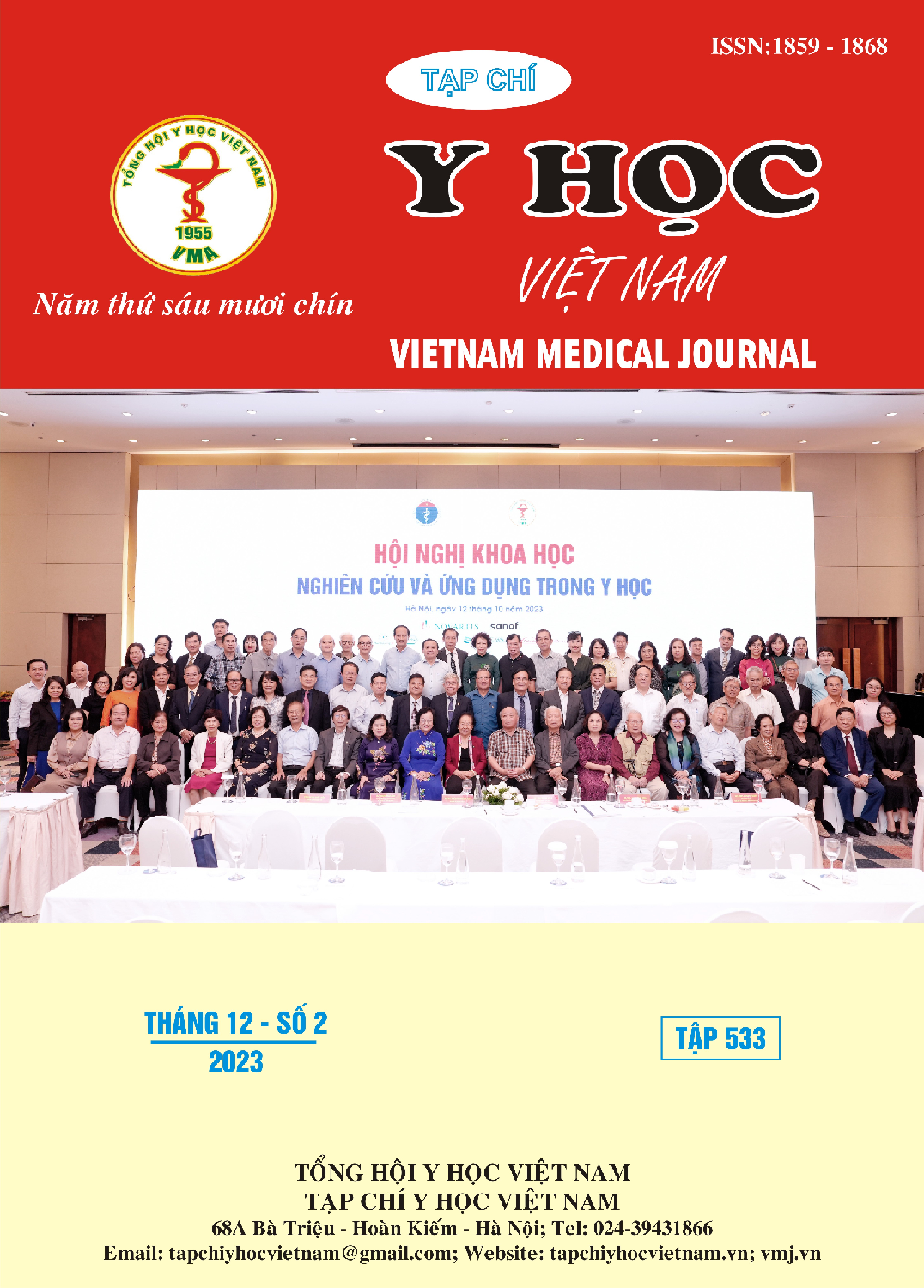VAI TRÒ CAN THIỆP NỘI MẠCH TRONG ĐIỀU TRỊ HO RA MÁU Ở BỆNH NHÂN LAO PHỔI
Nội dung chính của bài viết
Tóm tắt
Mục tiêu nghiên cứu: đánh giá tính hiệu quả và an toàn của can thiệp nội mạch điều trị ho ra máu ở bệnh nhân lao phổi; và đánh giá tỉ lệ tái phát sau can thiệp nội mạch. Phương pháp: Nghiên cứu đoàn hệ hồi cứu các trường hợp bệnh nhân ho ra máu do lao phổi được can thiệp nội mạch tại bệnh viện Chợ Rẫy từ năm 2020 đến tháng 2 năm 2023. Kết quả: Nghiên cứu thực hiện trên 81 bệnh nhân (tỉ lệ nam/nữ là 2,1/1); trung bình 54,9 tuổi. 13,6% bệnh nhân là lao phổi cấp tính và 86,4% là di chứng lao phổi. 227 động mạch bệnh lý được xác định; trung bình: 2,8 ± 1,7 động mạch trên một bệnh nhân. Dấu hiệu chính trên chụp mạch bao gồm: tăng sinh mạch máu ngoại biên (93,8%); phì đại gốc mạch, mạch máu giãn ngoằn ngoèo (86,4%); thông nối tuần hoàn phổi (39,5%); giả phình mạch (9,9%) và thoát mạch thuốc cản quang (1,2%). Thành công tức thời về mặt lâm sàng: 97,5%. Tỉ lệ tái phát trong vòng 6 tháng là 30,4%. U nấm phổi (HR = 3,77; p = 0,009) và thông nối tuần hoàn phổi (HR = 4,81,77; p = 0,009) là các yếu tố nguy cơ liên quan tái phát ho ra máu. Biến chứng nặng ghi nhận 1 trường hợp (1,2%) nhồi máu não sau thuyên tắc. Kết luận: Can thiệp nội mạch là hiệu quả và an toàn để điều trị các trường hợp ho ra máu do lao phổi, tuy nhiên tỉ lệ tái phát sau can thiệp còn cao.
Chi tiết bài viết
Tài liệu tham khảo
2. Panda A, Bhalla AS, Goyal A. Bronchial artery embolization in hemoptysis: a systematic review. Diagn Interv Radiol. Jul-Aug 2017;23(4):307-317. doi:10.5152/dir.2017.16454
3. Anuradha C, Shyamkumar NK, Vinu M, Babu NR, Christopher DJ. Outcomes of bronchial artery embolization for life-threatening hemoptysis due to tuberculosis and post-tuberculosis sequelae. Diagn Interv Radiol. Jan-Feb 2012;18(1):pp. 96-101. doi:10.4261/1305-3825.dir.3876-11.2
4. Sarioglu O, Capar AE, Yavuz MY, Belet U. Angiographic Findings and Outcomes of Bronchial Artery Embolization in Patients with Pulmonary Tuberculosis. Eurasian J Med. Jun 2020;52(2):126-131. doi:10.5152/eurasianjmed.2020.19221
5. Singhal R, K BS, Naranje P, et al. Society of Chest Imaging and Interventions Consensus Guidelines for the Interventional Radiology Management of Hemoptysis. Indian J Radiol Imaging. Jul 2023;33(3):361-372. doi:10.1055/s-0043-1762552
6. Seyyedi SR, Tabarsi P, Sadr M, et al. Bronchial Angioembolization for Management of Hemoptysis Due to Pulmonary Tuberculosis. Tanaffos. Feb 2021;20(2):134-139.
7. Zheng Z, Zhuang Z, Yang M, et al. Bronchial artery embolization for hemoptysis: A systematic review and meta-analysis. J Interv Med. Nov 2021;4(4):172-180. doi:10.1016/j.jimed.2021.08.003


